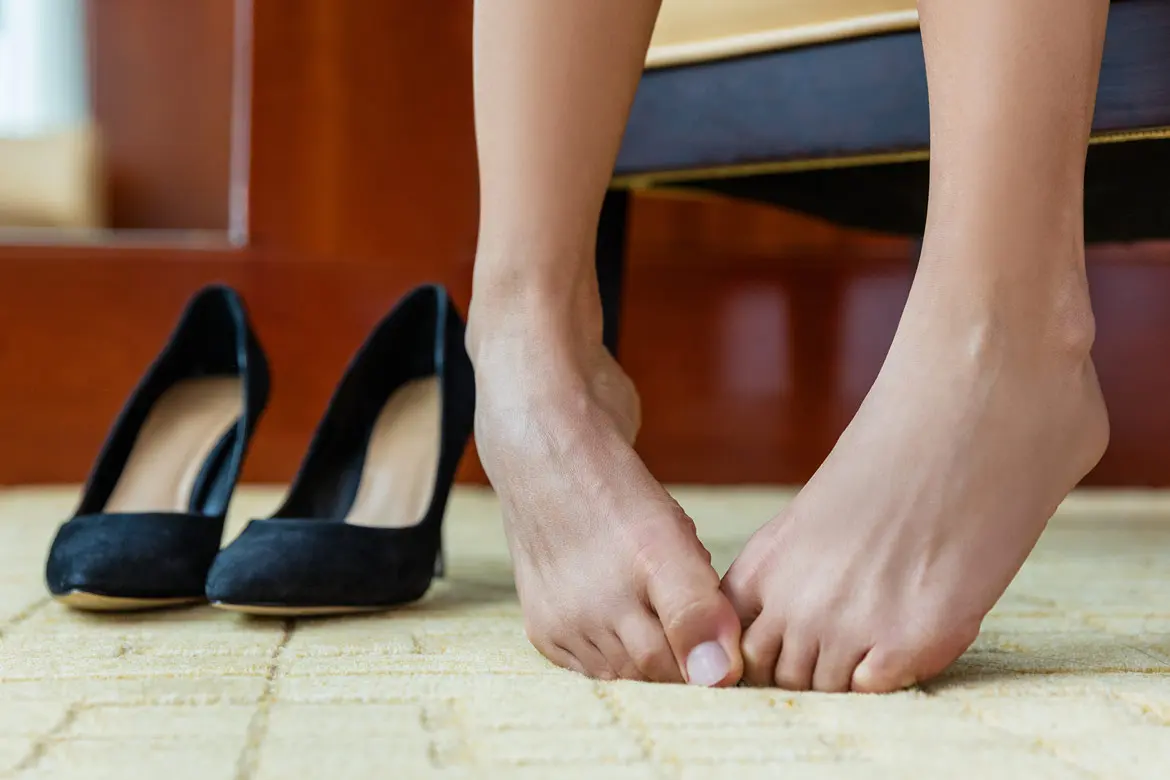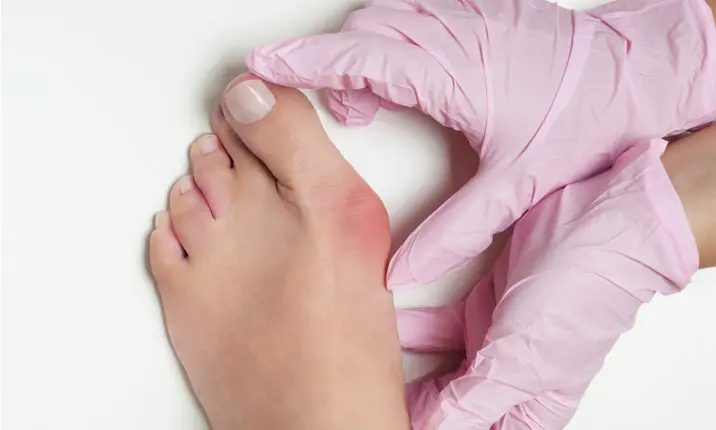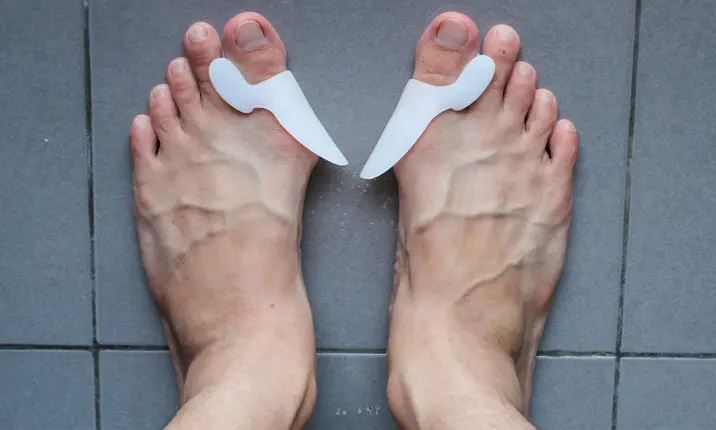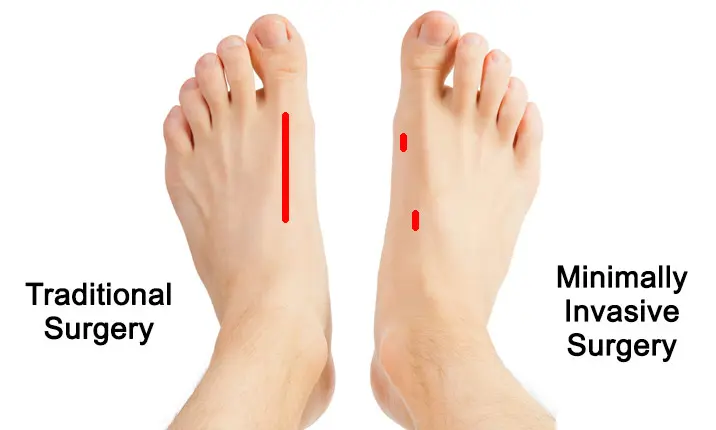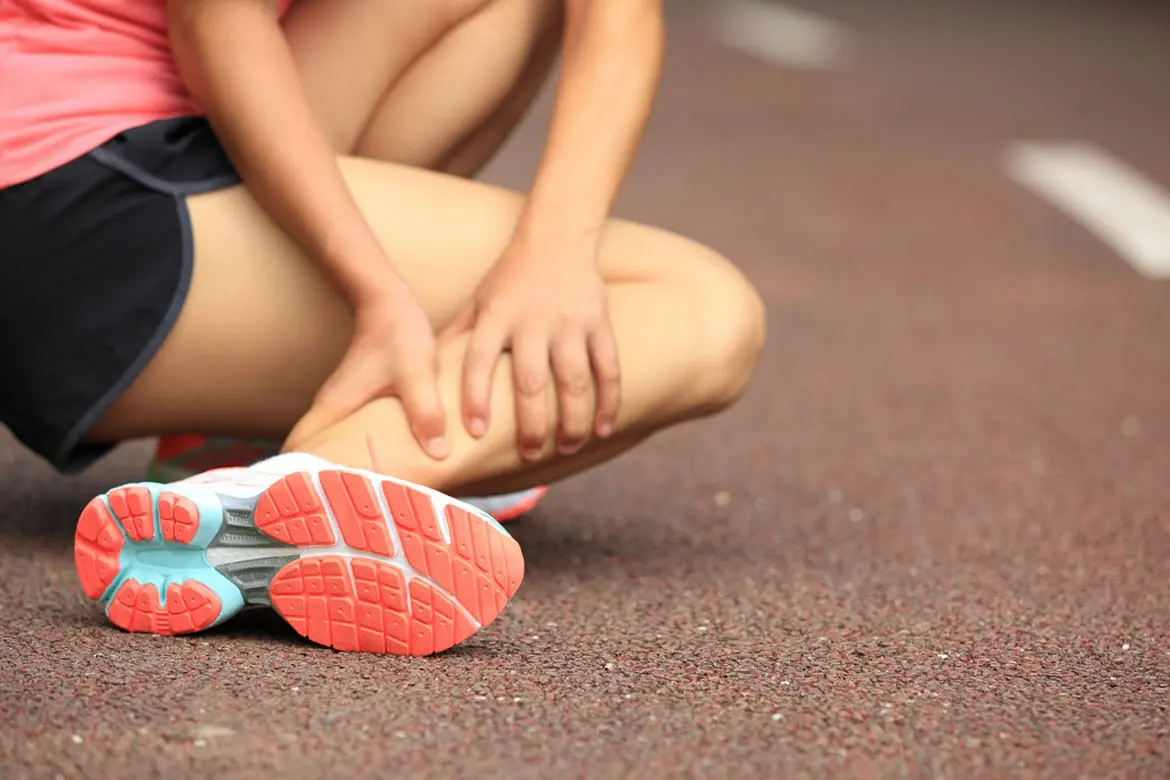What is a bunion?
A bunion is a painful, bony bump that forms at the joint between your big toe and your foot. Most people's big toes naturally lean inward slightly towards the other toes. Over time, if the angle of your big toe becomes more pronounced, the point at which your metatarsal meets the toe becomes inflamed and enlarged. Bunions usually take years to form. While they may not hurt too much to begin with, eventually they can become so painful that even walking is difficult.
Symptoms of a bunion
Look out for the following signs and symptoms of a bunion:
- A bony bump on the side of your foot next to your big toe
- Your big toe pointing at a severe angle towards the other toes
- Hardened skin or callouses over the bump
- Redness or irritation
- Warm, shiny skin on the bump
- Swelling and inflammation
- Pain when walking or moving the toes
Causes of bunions
- Heredity. Some people are more predisposed to bunions than others, with your foot and bone structure being a major contributor to the problem. Often, bunions run in the family.
- High heels. They are also more common in women than men, due to women's shoe styles tending to be tighter, and high heels, causing the bones of the feet to move into unnatural positions.
- Ill-fitting shoes. Shoes that are too tight, too narrow or too pointed are more likely to cause the development of bunions.
- Age. Bunions are also more common with age, as over time your feet spread, and your joints become weaker and more susceptible to damage.
- Rheumatoid arthritis. The swelling of the joints due to rheumatoid arthritis can lead to bunions.
Bunion treatment
If your bunion is not severe, your doctor may advise that surgery is not necessary. Surgery always comes with risks and if your bunion isn't too serious, it may not be worth it. Alternative treatment and prevention methods include:
- Medication for pain and inflammation
- Foot baths or ice packs
- Changing your shoes for wider, more supportive options
- Orthotic inserts
Bunion surgery
Sometimes a bunion is so severe that it is too painful to cope with, or the joints no longer move or function. If there is no better option, your doctor might recommend surgical intervention to remove the bunion. There are many different methods to treat painful bunions.
Types of bunion surgery include:
- Full bunionectomy, where the part of the foot that is bulging is removed
- Fusing the toe joint
- Implanting an artificial joint
- Realigning ligaments around the joint
- Reshaping the big toe and metatarsal bones
- Osteotomy, making small cuts in the bones and adjusting their position
Depending on your individual requirements, your doctor may need to perform a combination of these procedures to correct the problem.
Typically very invasive, bunionectomies can be quite painful and take a significant amount of time to recover. You will not be able to walk on your foot for a few weeks, and you will need physical therapy to build strength again in your joints.
As minimally invasive techniques are developing rapidly in all areas of clinical care, minimally invasive bunion surgery is emerging as a popular option for treating bunions.
Minimally invasive bunion surgery
Minimally invasive bunion surgery aims to correct the problem with as little intervention as possible.
- Instead of one long incision, your surgeon will make a couple of very small incisions.
- Excess bone can be removed through the smaller incisions, which require only 1 or 2 stitches to be closed.
- Small corrections can also be made through the incisions to shift and realign the bones.
The benefits of undergoing minimally invasive surgery include:
- Shorter recovery time – patients are able to walk on their foot the same day of the procedure
- Less pain involved with recovery
- Minimal scarring because the small incisions require fewer stitches
Post-surgery
If you choose to go for a bunion surgery, by traditional or MIS techniques, you should be aware that there is a chance the bunion could reform. Overcorrection is also a possibility, where the toe is angled slightly the other way. There may still be pain in your joint, particularly if in addition to the bunion, your joint is also arthritic, or you have gout. There's also a chance you will lose mobility in your toes.
Recovery after a bunion surgery
Hence, after your surgery, you need to take the necessary steps to give yourself the best chance of a full recovery. You should:
- Follow your doctor's advice about resting your foot
- Take any prescribed medications for inflammation or pain
- Participate in physical therapy to regain mobility in the joint
- Wear supportive, wide shoes
- Wear any orthotic supports or insoles your doctor recommends
- Eat a balanced diet, including joint-friendly foods like oily fish, berries, grapes, olive oil, ginger and garlic
If you are suffering from a bunion, visit your doctor. They will discuss your options with you and help you decide on the right treatment with you.
